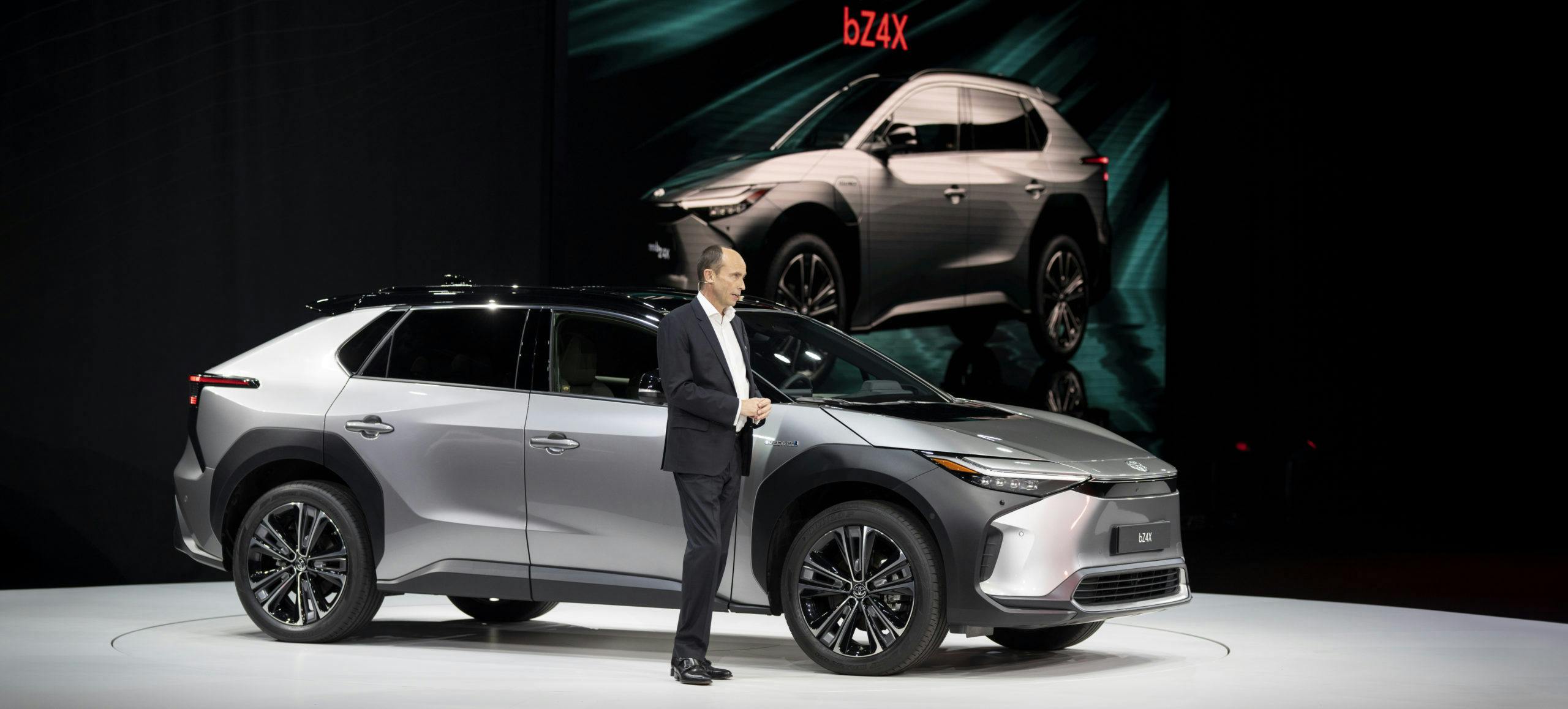Toyota has announced more details on its carbon neutrality plans at its Kenshiki event in Europe. In addition to showing the production bZ4X in the region for the first time, the company has revealed that by 2030, it anticipates its sales mix for zero-emissions vehicles (ZEV) to make up at least 50 percent in Western Europe. By 2035, it aims to get 100 percent CO2 reduction from all of its vehicles, assuming there’s sufficient charging and hydrogen refueling infrastructure, according to Matt Harrison, President, and CEO of Toyota Motor Europe.
Unlike its European competitors that have doubled down on electrification, Toyota favors a multi-solution approach. That means it’ll continue to offer hybrid, plug-in hybrid, battery-electric, and hydrogen fuel cell powertrains. Gill Pratt, Chief Scientist at Toyota Motor Corporation (TMC) and CEO of Toyota Research Institute (TRI), noted that Toyota will utilize its entire arsenal to make sure there’s an electrified solution that’s viable for every consumer. Infrastructure remains the determining factor for Toyota’s approach, hence why it remains committed to multi types of electrified powertrains instead of putting it all on one.
Investment in battery technology continues as Toyota is poised to introduce the bi-polar nickel-metal-hydride battery. First revealed on the Japanese market Aqua, this pack uses less rare-earth metals to lower cost yet has double the output density of a conventional battery of the same composition. Toyota says it is also applying the leanings from developing the bi-polar nickel-metal-hydride batteries to lithium-ion ones. Together with improved efficiencies, it expects to see a 50 percent cost reduction per vehicle without sacrificing range on the second half of the 2020s.
Solid-state batteries are another technology that Toyota is working on since it’s considered the next big step in making EVs viable. However, hybrid vehicles will be the first to get them in Toyota’s lineup after recent prototype testing. They’ll eventually spread to other types of electrified vehicles. Solid-state batteries are expected to cut charging times significantly while delivering higher output and longer driving range on a full charge.
In Europe, 70 percent of Toyota’s sales make up of electrified vehicles, which is its highest in any region. The bZ4X, a compact crossover, will be the brand’s first long-range EV and its first all-electric model since the discontinuation of the RAV4 EV in 2014. It will use Toyota’s new e-TNGA platform, which was developed specifically for EVs. That architecture will eventually underpin seven vehicles under the new Beyond Zero sub-brand. The bZ4X goes on sale in the U.S. in the spring of 2022
Toyota also codeveloped a version of the e-TNGA platform for subcompact and compact cars and crossovers with Daihatsu and Suzuki. The one used by the bZ4X was a collaborative effort between Toyota and Subaru, the latter of which calls their version the e-Subaru Global Platform and underpins the Solterra. Both the dual-motor versions of the bZ4X and Solterra will get X-Mode, which improves performance on surfaces like mud, sand, and snow.
Single-motor variants of the Toyota bZ4X get a 201-hp electric motor mounted in front and a 71.4-kWh battery pack. Dual-motor versions make 215 hp and use a larger 72.8-kWh battery. Toyota estimates the single-motor bZ4X to have a driving range of 250 miles per charge. Dual-motor variants should get around 220 miles, the same as the Subaru Solterra, which will only be available in that configuration for the U.S. market.

